
Russia is the largest country in the world, even after the breakup of the Soviet Union created 14 other countries out of the territory it previously controlled. With hundreds of different ethnic minorities living in concentrated geographic areas within their borders, though, Russia is still a gigantic colonial empire. If the authority of the central government collapses these are some of the new countries that might emerge.
24/7 Wall St. Insights
- Just as the Republics of the Soviet Union were the basis for the split up of that country, the current Russian Republics are some of the most likely regions to seek to govern themselves.
- Those with the lowest percentage of ethnic Russians might be expected to be most eager to throw off Russian rule.
- Also: Discover “The Next NVIDIA
Putin’s Passing
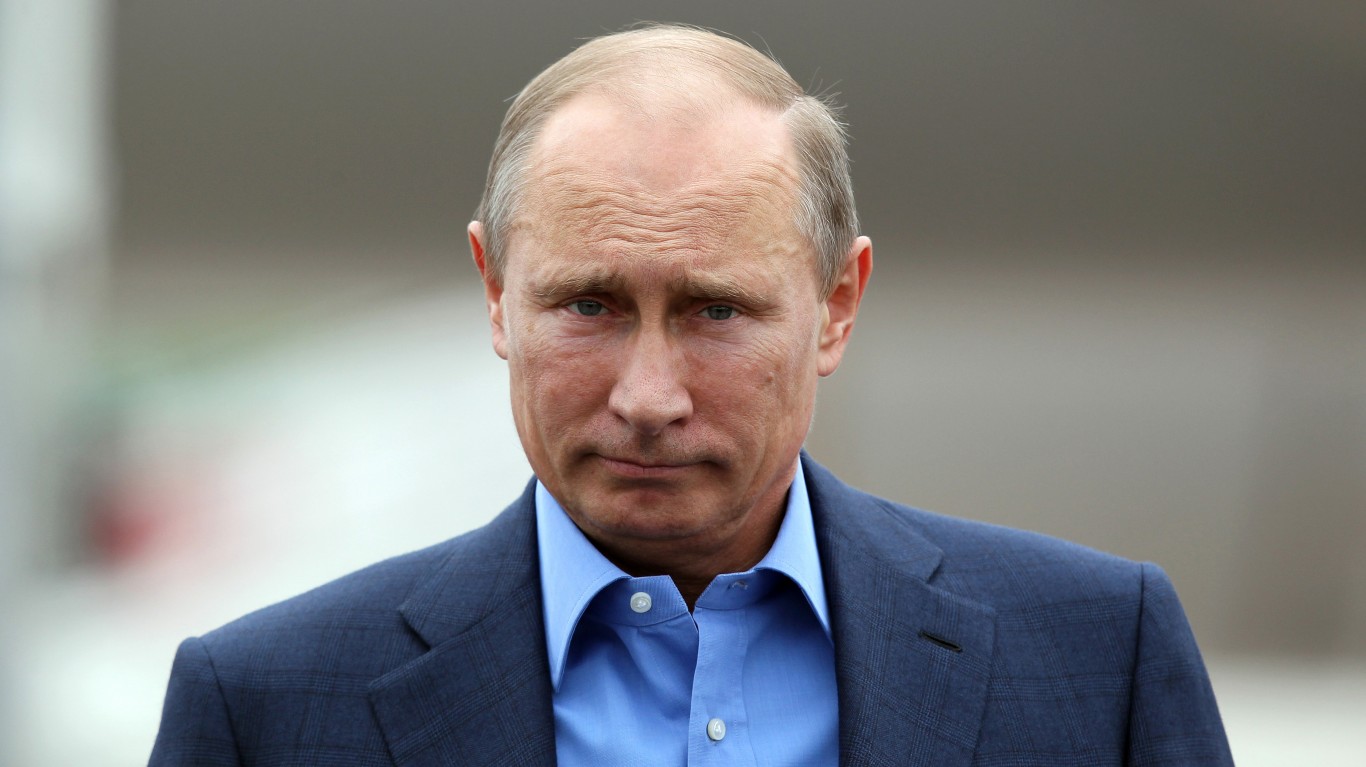
There are a number of different ways the Russian government could collapse. The most likely is that at some point Vladimir Putin will pass away and there will be a power struggle for his position. Dictators often eliminate their strongest opposition to prevent threats to their rule. As a result, when an authoritarian ruler leaves the scene sometimes there is a succession of competing weaker rulers who eliminate one another until someone comes out on top. During the chaos, regions discontented with Russian rule might seize the opportunity to make their exit.
Military & Economic Disaster

Another possibility for Russian collapse would be if they are defeated in the war in Ukraine. A humiliating and undeniable military defeat, along with overwhelming numbers of casualties and economic hardship from sanctions could be enough to create social unrest among the Russian people. Or, more likely, could cause the wealthy ruling oligarchs to conspire to replace the country’s leadership before total collapse. Previous major Russian reforms happened after their defeats in the Crimean War, the Russo-Japanese War, World War I, and the Cold War.
Pandemic

Finally, a plausible way the Russian government could collapse would be in the event of an unmanageable healthcare crisis. If another pandemic emerged that was even more disastrous and deadly than COVID-19, the Russian government’s resources might be stretched thin trying to keep order in the major cities. Determined separatist movements in more far-flung parts of the country might be able to detach their countries while Russia was too weak to do anything about it.
Waiting Wolves
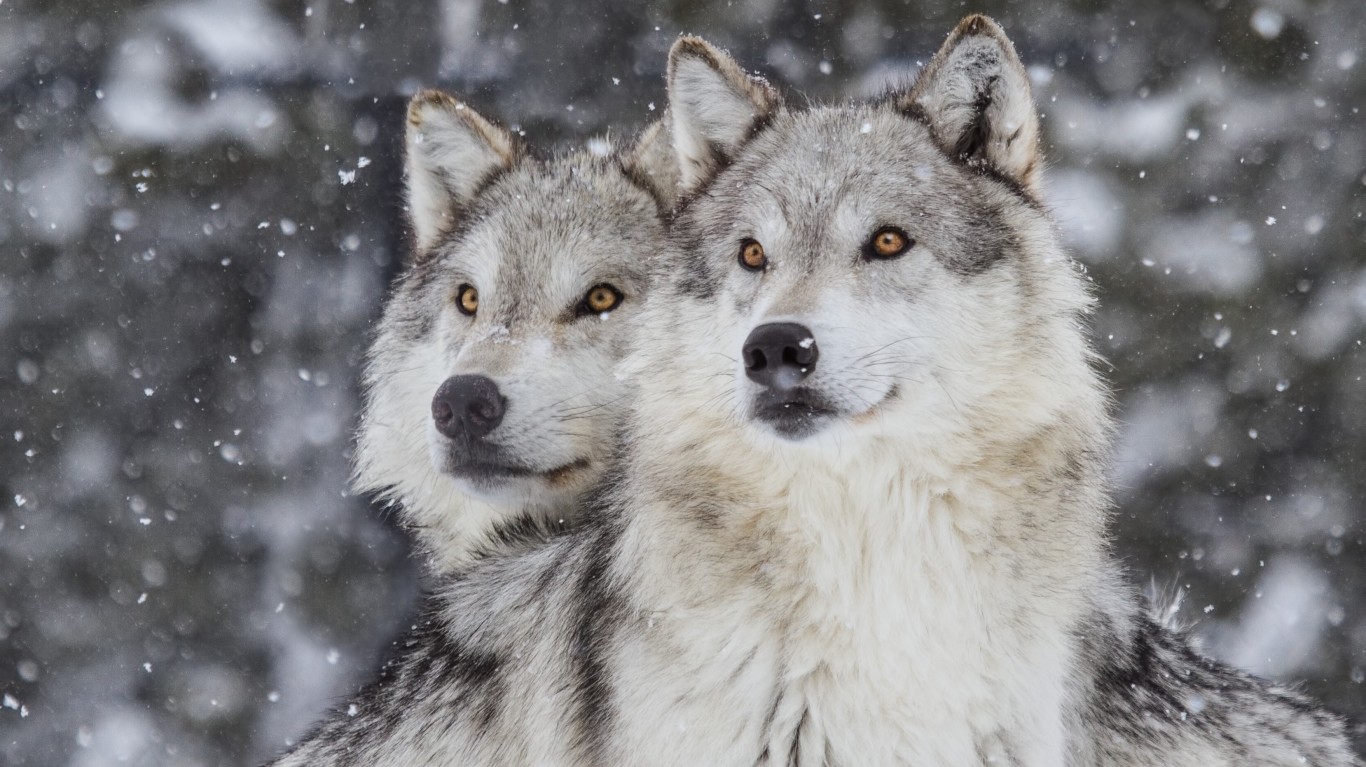
You might think Russia’s enemies would be glad for the country to break up, and to some extent that is true, if it can be managed in an orderly and non-violent way. Japan would be happy to reclaim the southern Kuril Islands that Russia has occupied since the end of World War II. China was forced to cede large territories to Russia in the 19th century. China has recently published regional maps that identify these parts of Russia by their previous Chinese names. Russia’s detached enclave of Kaliningrad, on the Baltic Sea coast between NATO allies Lithuania and Poland, is a security threat to the West that interrupts NATO’s near-complete control of the Baltic.
Reluctant Allies
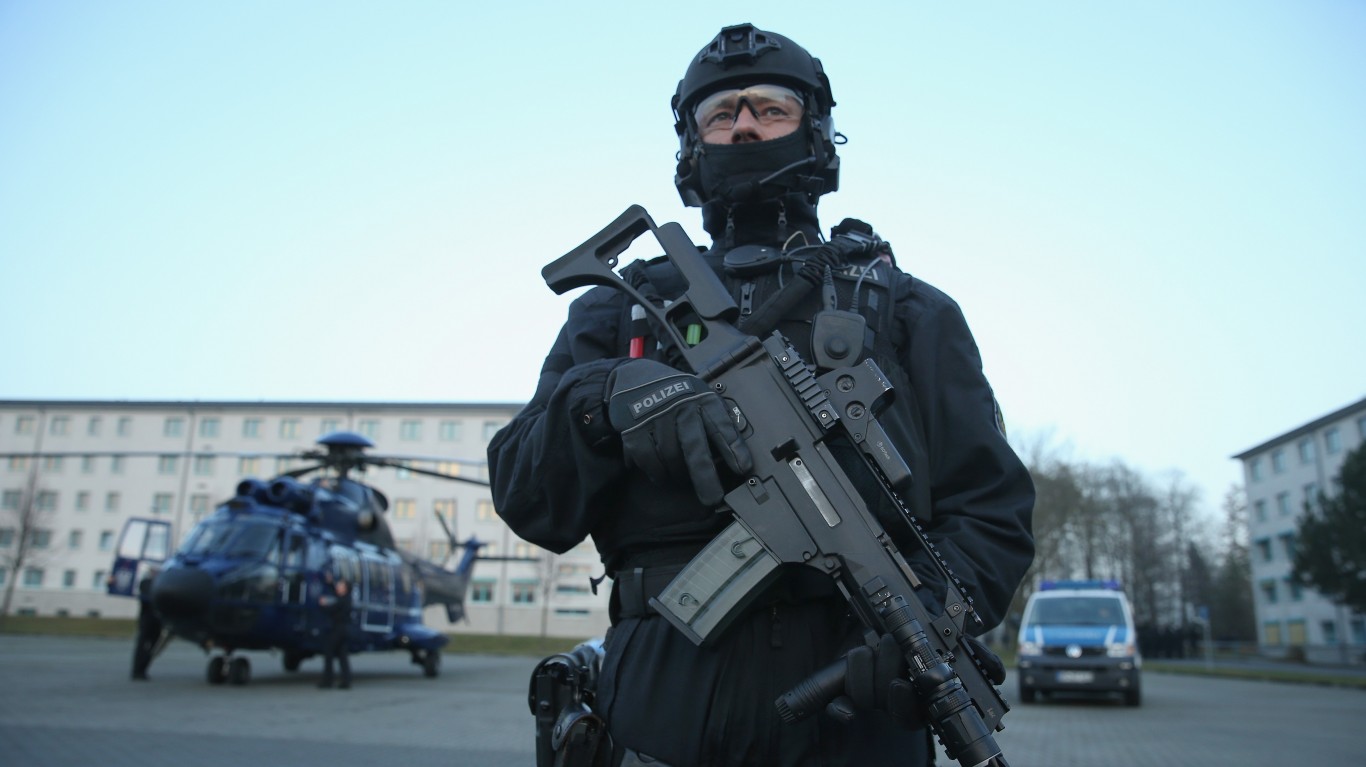
On the other hand, the whole world, including Russia’s enemies, would have reason to be alarmed if the country broke up. Russia has thousands of nuclear weapons that could fall into the wrong hands in the chaos of decolonization. The authorities might even choose to use tactical nuclear weapons against regional domestic enemies to keep strategic areas from leaving the country. This could spread fallout and create a refugee crisis that would impact Russia’s neighbors. If the United States, China, and other powers felt that world peace would be better served with Russia remaining in control of its territory rather than collapsing in chaos, then they might provide Moscow with intelligence or military assistance to suppress rebels.
Russian Geography
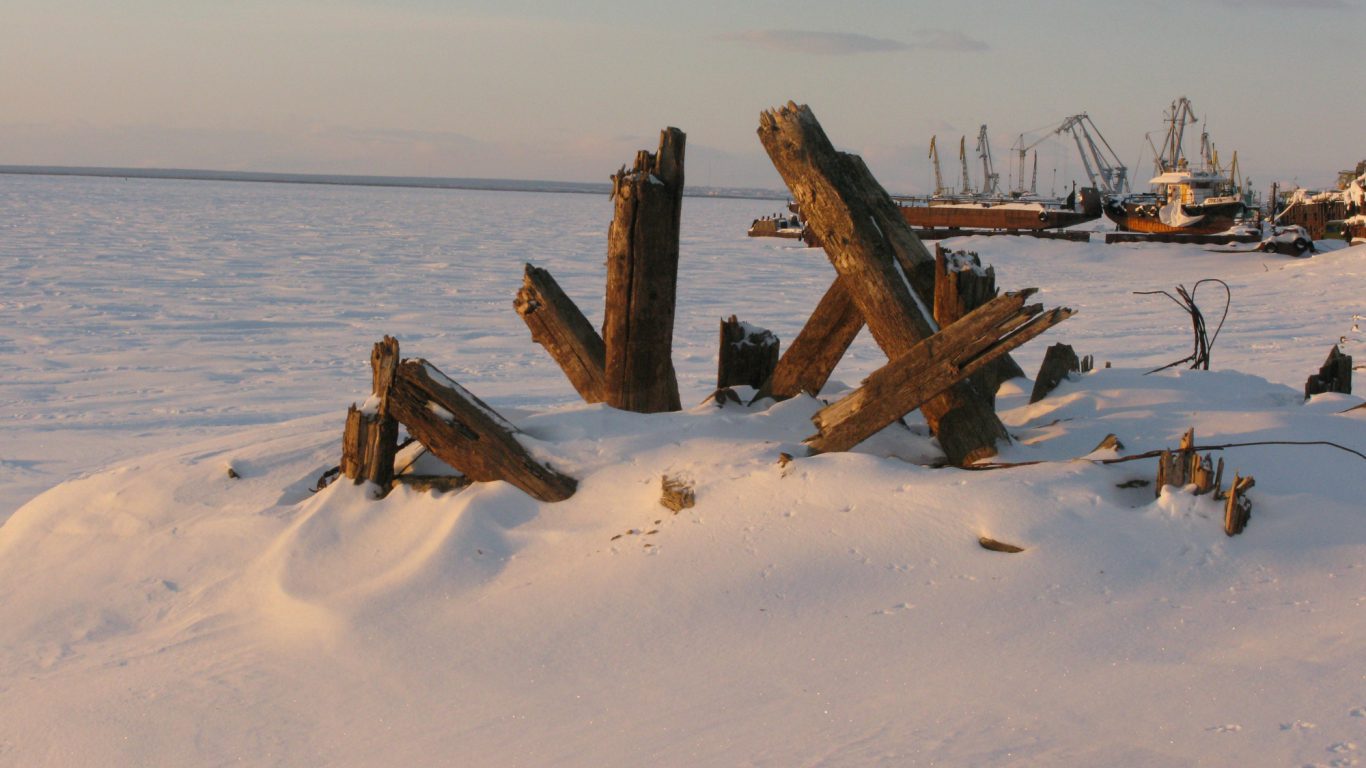
Russia’s geography makes it an immensely difficult country to control. It covers 10% of the world’s land surface and includes biomes of arctic tundra, enormous evergreen forests, rolling grassy steppes, deserts, and mountains. Some of the coldest temperatures on Earth have been recorded there. Yet, when the ground is frozen is the best time to move heavy equipment and engage in military operations, because otherwise it thaws into a marshland that will get tanks and trucks stuck in deep mud.
Despite having coasts on the Pacific and Arctic Oceans, and the Baltic, Black, and Caspian Seas, Russia has limited warm-water access to the world’s sea lanes, which makes its trade and naval operations vulnerable to interdiction.
The European part of the country is a huge plain that offers few natural defenses. This has resulted in Russia being invaded numerous times, but its enemies are generally defeated more by the vast size and population of the country than by its military strategy.
Russian Sociology
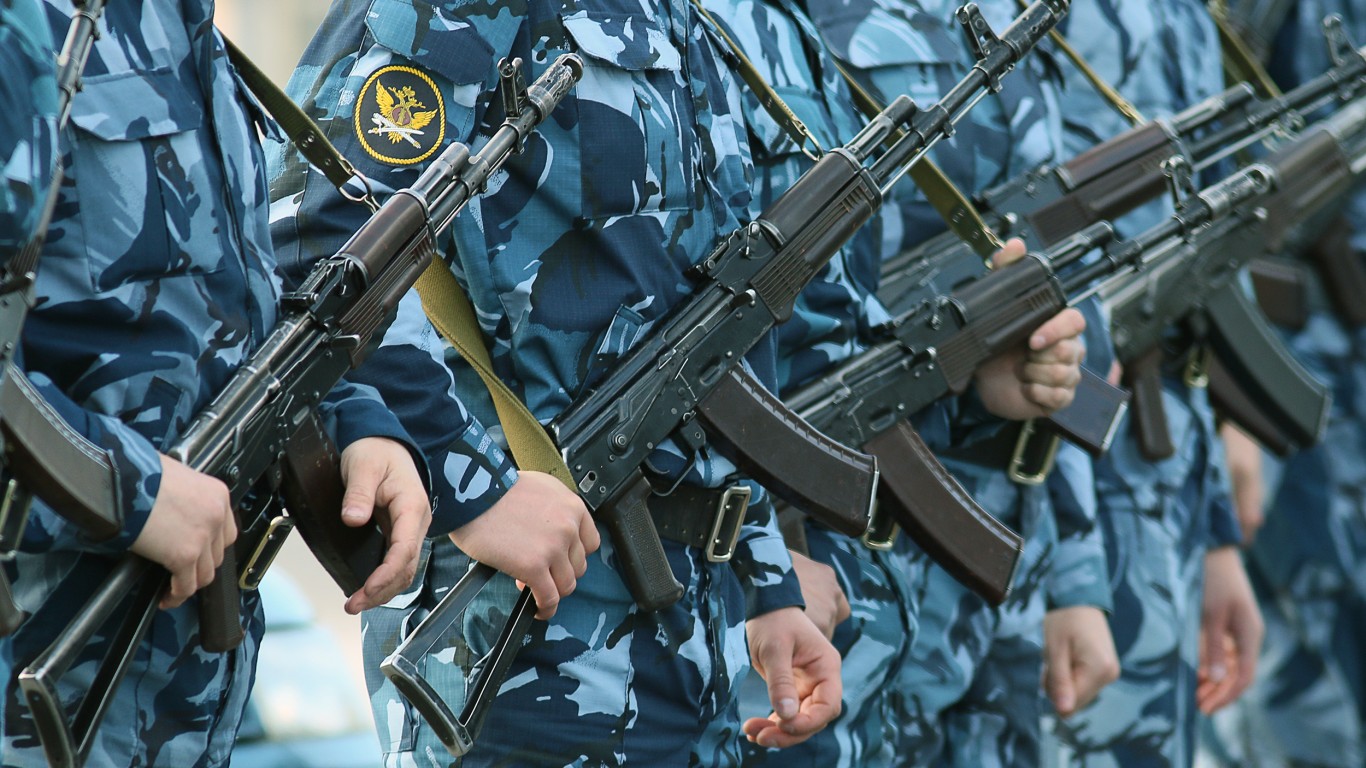
Having been invaded numerous times over the centuries, Russia has developed into a centralized, authoritarian society that is highly suspicious of outsiders. The government tightly controls the media to create a narrative for its people that plays upon their fears and makes them loyal to their leaders.
Russians have been conditioned into passivity by centuries of authoritarian leadership. Their harsh climate and the long-term deprivations of war and economic mismanagement have given them a high level of tolerance for conditions that might cause people in other societies to rise up in rebellion and change their government.
Of course, these are very broad generalizations. But it often happens that those who don’t share these characteristics escape Russia and build new lives in Western countries, which deprives Russia of an educated and critically-thinking class of potential opposition leaders. Finally, Russia has always struggled with corruption. All too often, those who resist the regime can be bought off . . . or killed off.
Russian Political Divisions
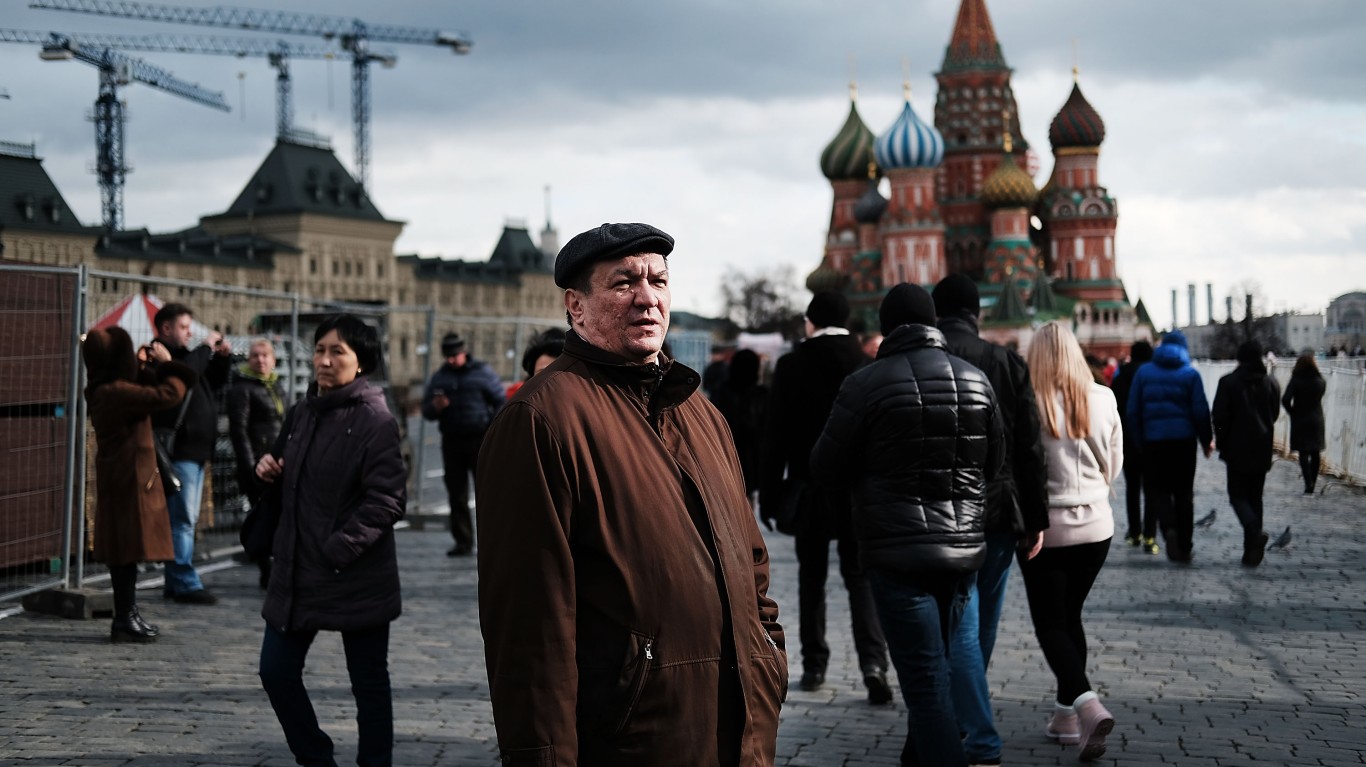
Russia has a complicated system of political divisions, with each having a different level of local sovereignty:
- 21 republics (Russia considers Crimea its 22nd republic but this is not internationally recognized)
- 9 krais
- 46 oblasts
- 2 federal cities
- 1 autonomous oblast
- 4 autonomous okrungs
It is also divided into 12 economic regions and 5 military districts.
Russian Fault Lines
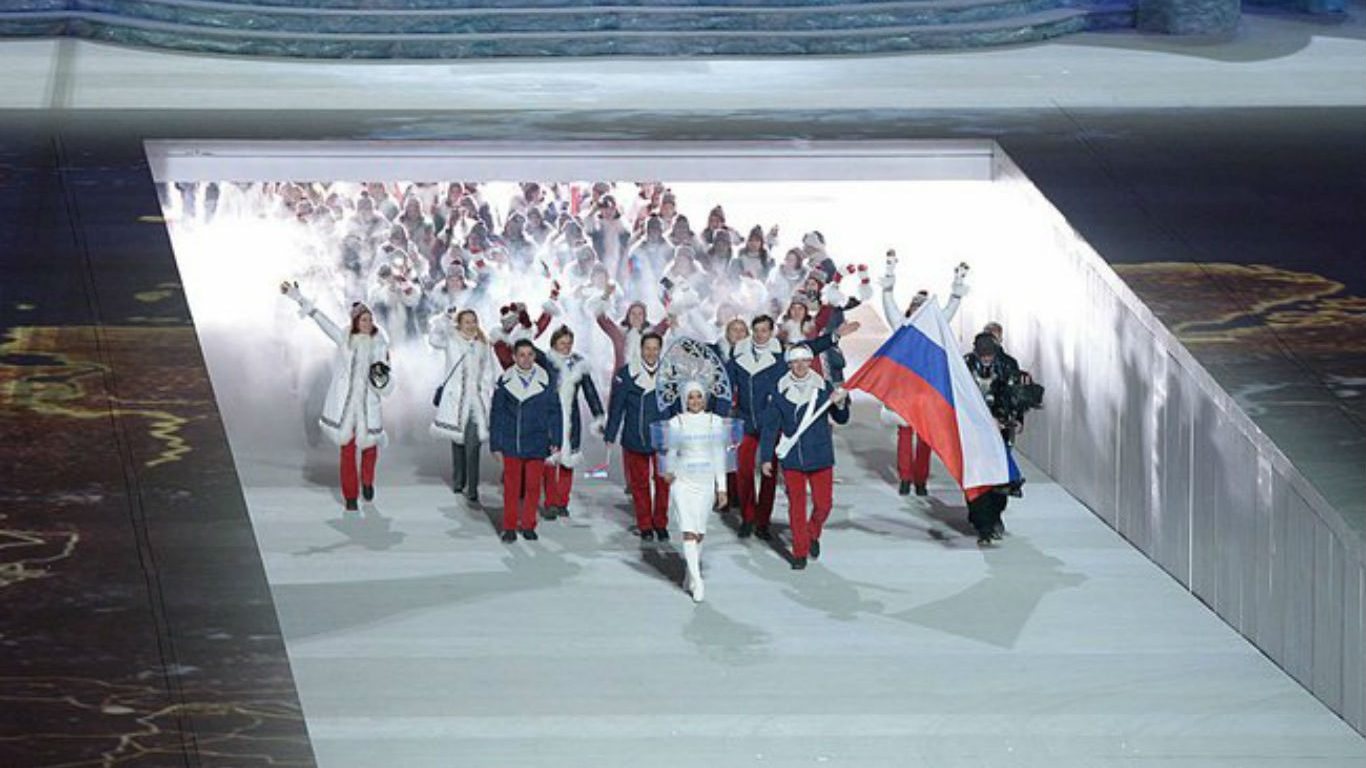
While it might be possible for Russia to split up along any of those political lines, the most likely candidates for full independent nationhood are the republics, which have their own ethnic identity. Each of them also has substantial numbers of Russian people living there who are in some cases the majority. Even when a local ethnicity is in the majority, however, that doesn’t mean they are necessarily discontented and want independence any more than, say, a concentration of Irish people in the U.S. would want their own country. However, if a Russian region were to seek independence, a distinctive ethnic identity would make that more of a possibility and make it easier to form a sustainable independent country with international recognition.
We’re listing next Russia’s 21 internationally-recognized republics in order of those with the least percentage of ethnic Russians to the most. On this basis, those at the beginning of the list might be most likely to aspire to independent nationhood.
1. Ingushetia
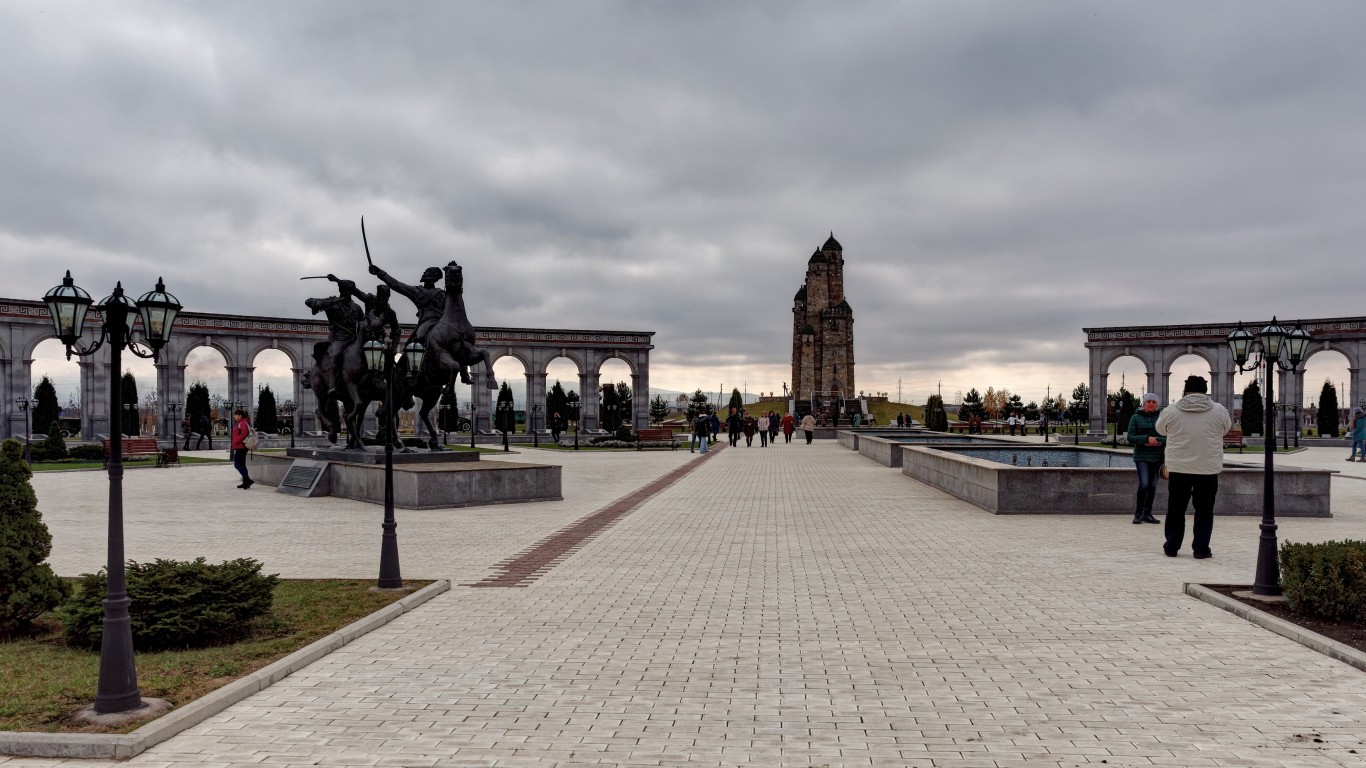
- Capital: Magas
- Location: North Caucasus
- Land area: 1,350 square miles
- Population: 509,000
- Ethnicities: Ingush, Russian
- Ethnic Russian Percentage: 1%
2. Dagestan
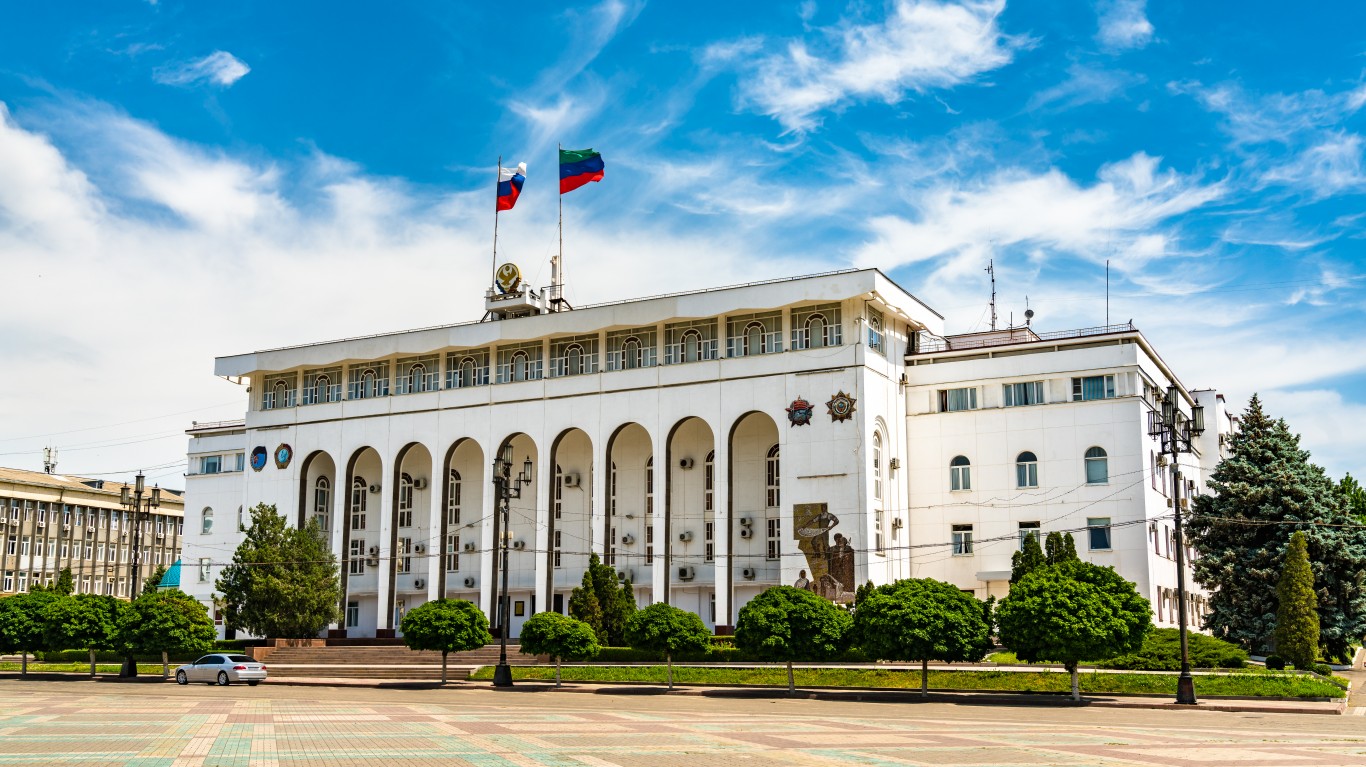
- Capital: Makhachkala
- Location: North Caucasus
- Land area: 19,400 square miles
- Population: 3,100,000
- Ethnicities: Avar, Dargin, Kumyk, Lezgin, Russian
- Ethnic Russian Percentage: 3.6%
3. Chechnya

- Capital: Grozny
- Location: North Caucasus
- Land area: 6,700 square miles
- Population: 1,500,000
- Ethnicities: Chechen, Russian
- Ethnic Russian Percentage: 2%
4. Tuva

- Capital: Kyzyl
- Location: Siberia
- Land area: 65,830 square miles
- Population: 336,000
- Ethnicities: Tuvan, Russian
- Ethnic Russian Percentage: 20%
5. Kabardino-Balkaria
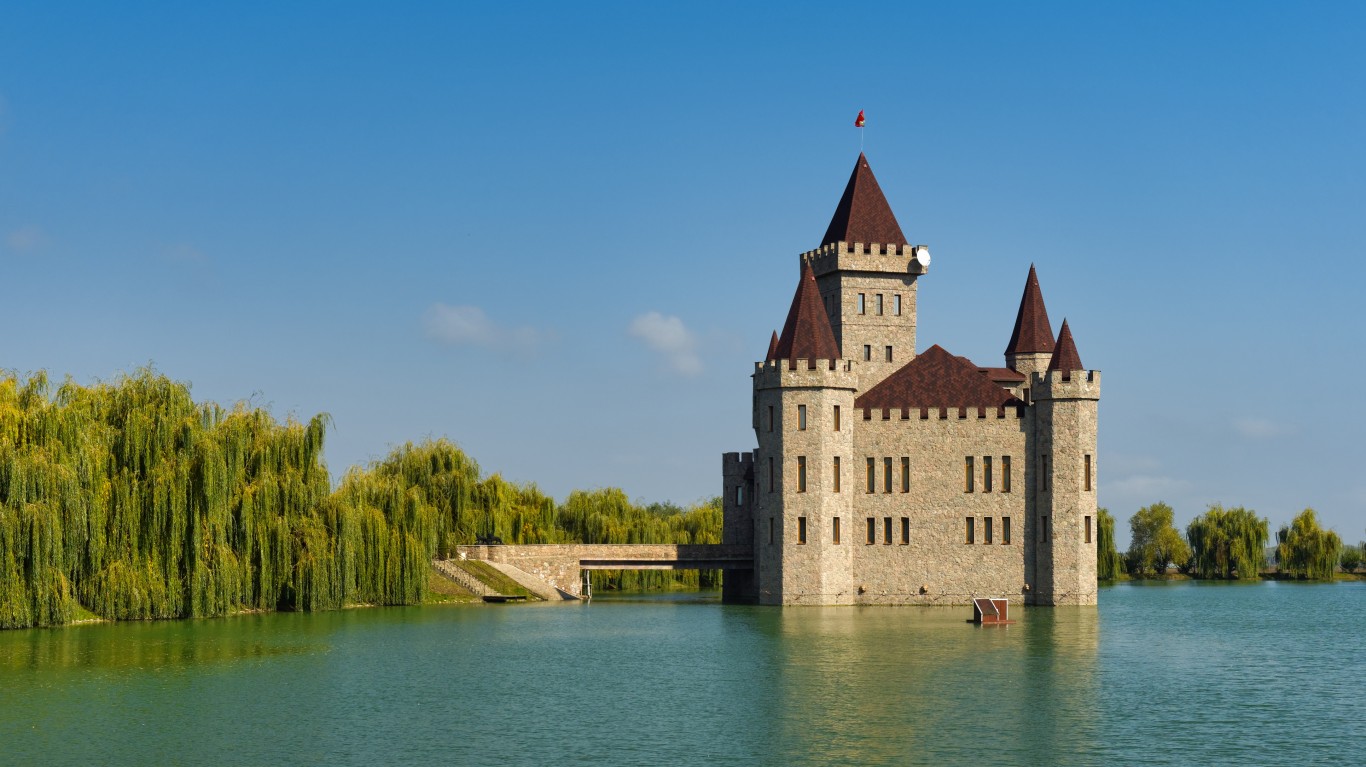
- Capital: Nalchik
- Location: North Caucasus
- Land area: 4,826 square miles
- Population: 890,000
- Ethnicities: Kabardian, Balkar, Russian
- Ethnic Russian Percentage: 22%
6. Chuvashia

- Capital: Cheboksary
- Location: Volga region
- Land area: 7,100 square miles
- Population: 1,260,000
- Ethnicities: Chuvash, Russian
- Ethnic Russian Percentage: 27%
7. North Ossetia-Alania
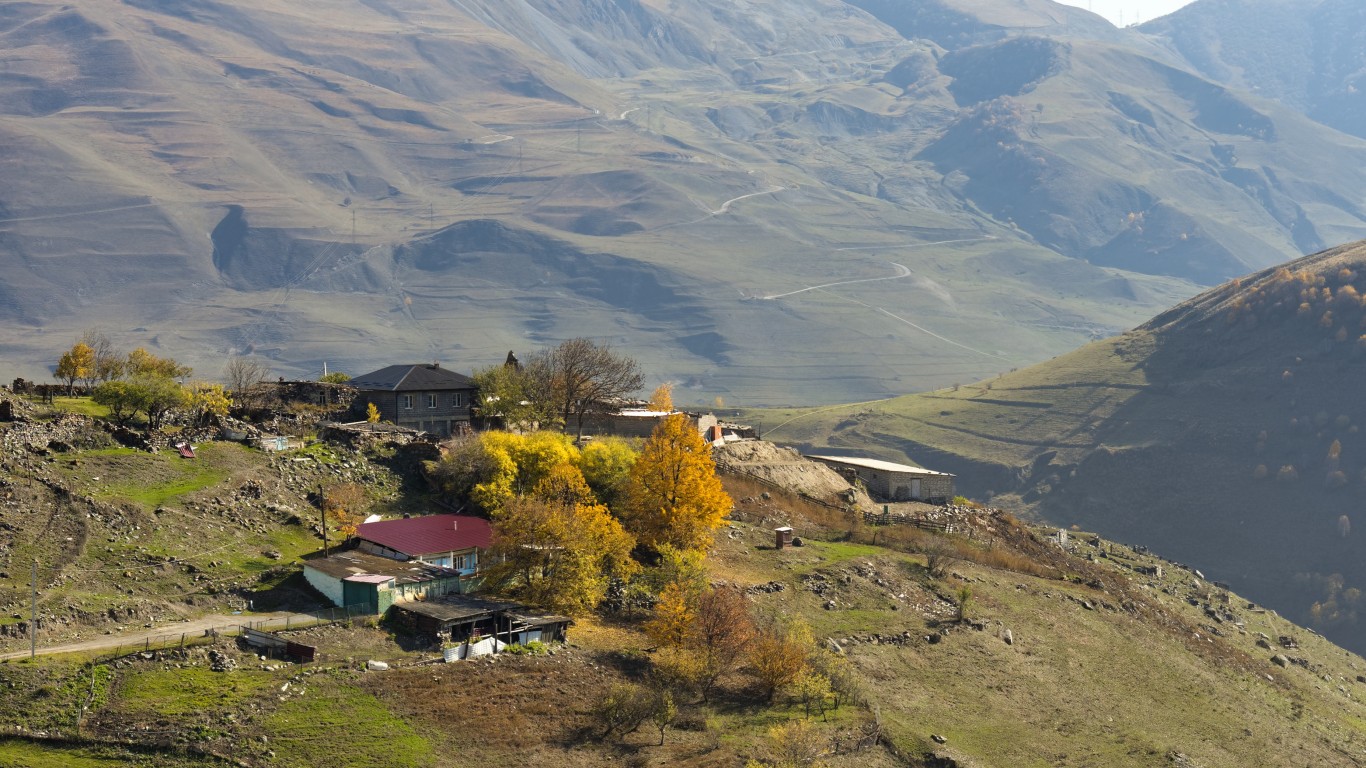
- Capital: Vladikavkaz
- Location: North Caucasus
- Land area: 3,088 square miles
- Population: 687,000
- Ethnicities: Ossetian, Russian
- Ethnic Russian Percentage: 29%
8. Kalymykia
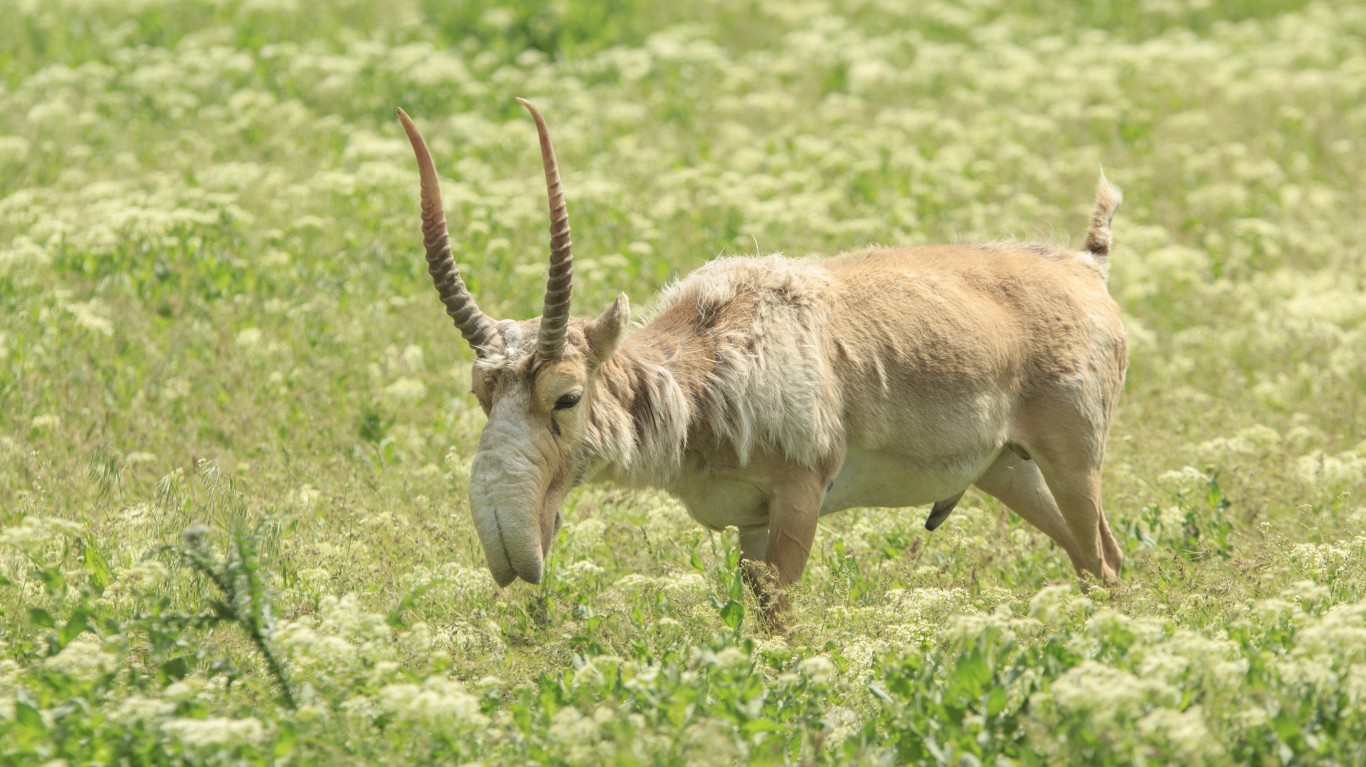
- Capital: Elista
- Location: Southern Russia
- Land area: 29,400
- Population: 267,133
- Ethnicities: Kalmyk, Russian
- Ethnic Russian Percentage: 30%
9. Karachay-Cherkessia
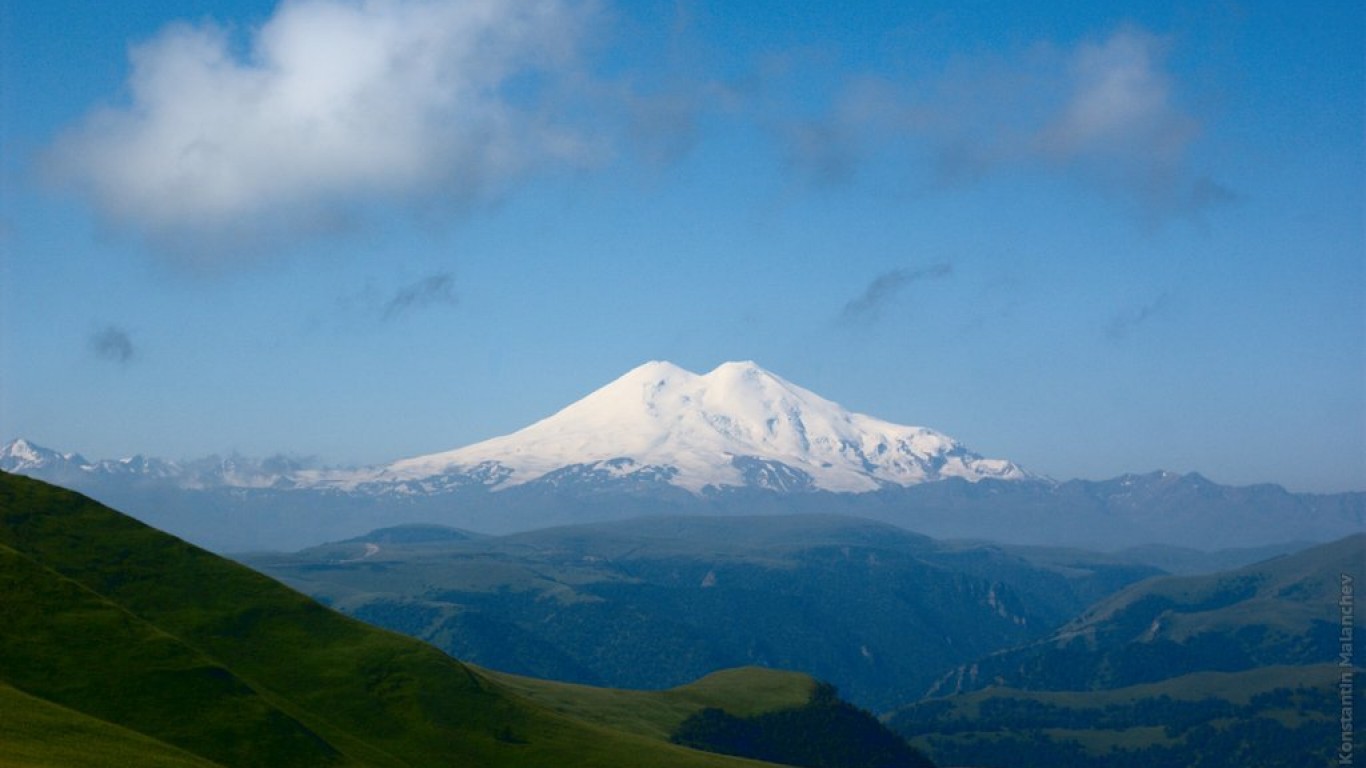
- Capital: Cherkessk
- Location: North Caucasus
- Land area: 5,444 square miles
- Population: 460,000
- Ethnicities: Karachay, Circassian, Russian
- Ethnic Russian Percentage: 33%
10. Bashkortostan
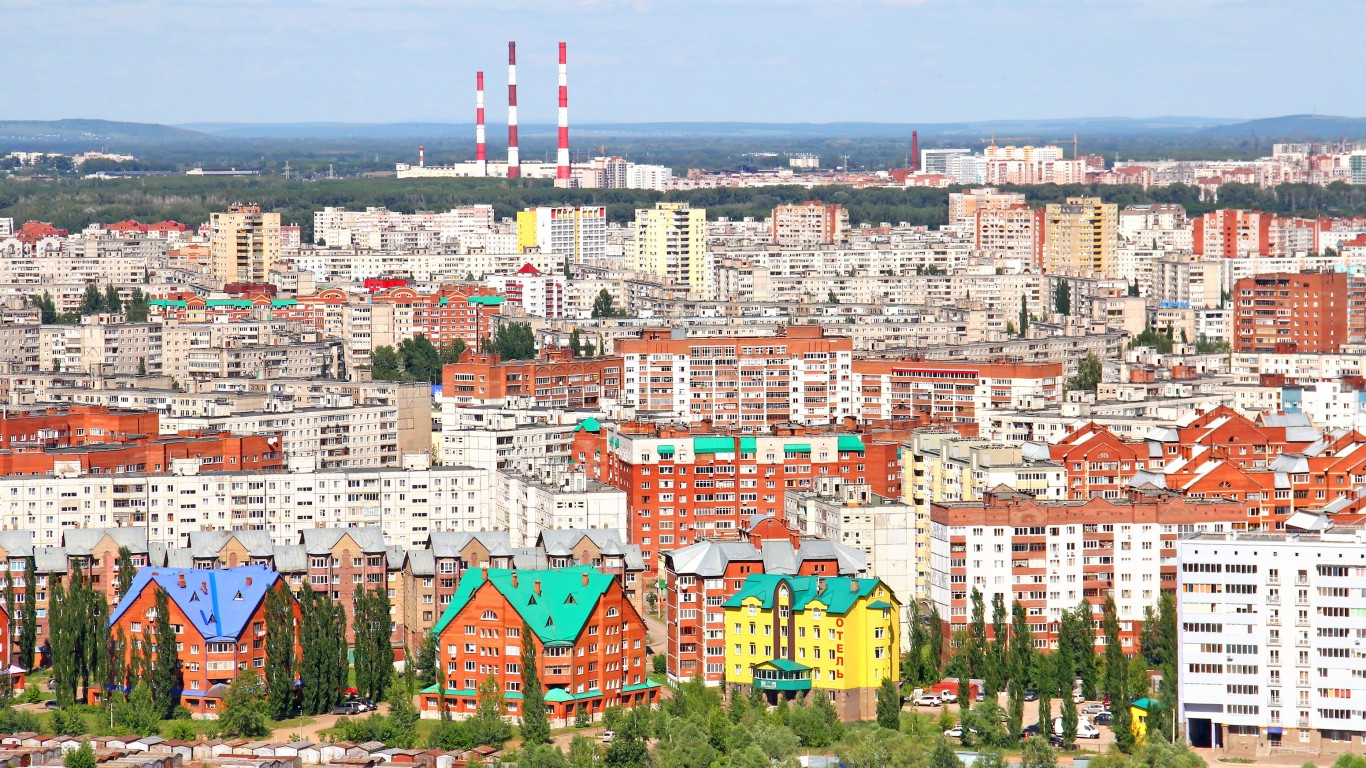
- Capital: Ufa
- Location: Volga region
- Land area: 55, 444 square miles
- Population: 4,100,000
- Ethnicities: Bashkir, Tatar, Russian
- Ethnic Russian Percentage: 36%
11. Tatarstan

- Capital: Kazan
- Location: Volga region
- Land area: 26,255 square miles
- Population: 3,800,000
- Ethnicities: Tatar, Russian
- Ethnic Russian Percentage: 39%
12. Mari El
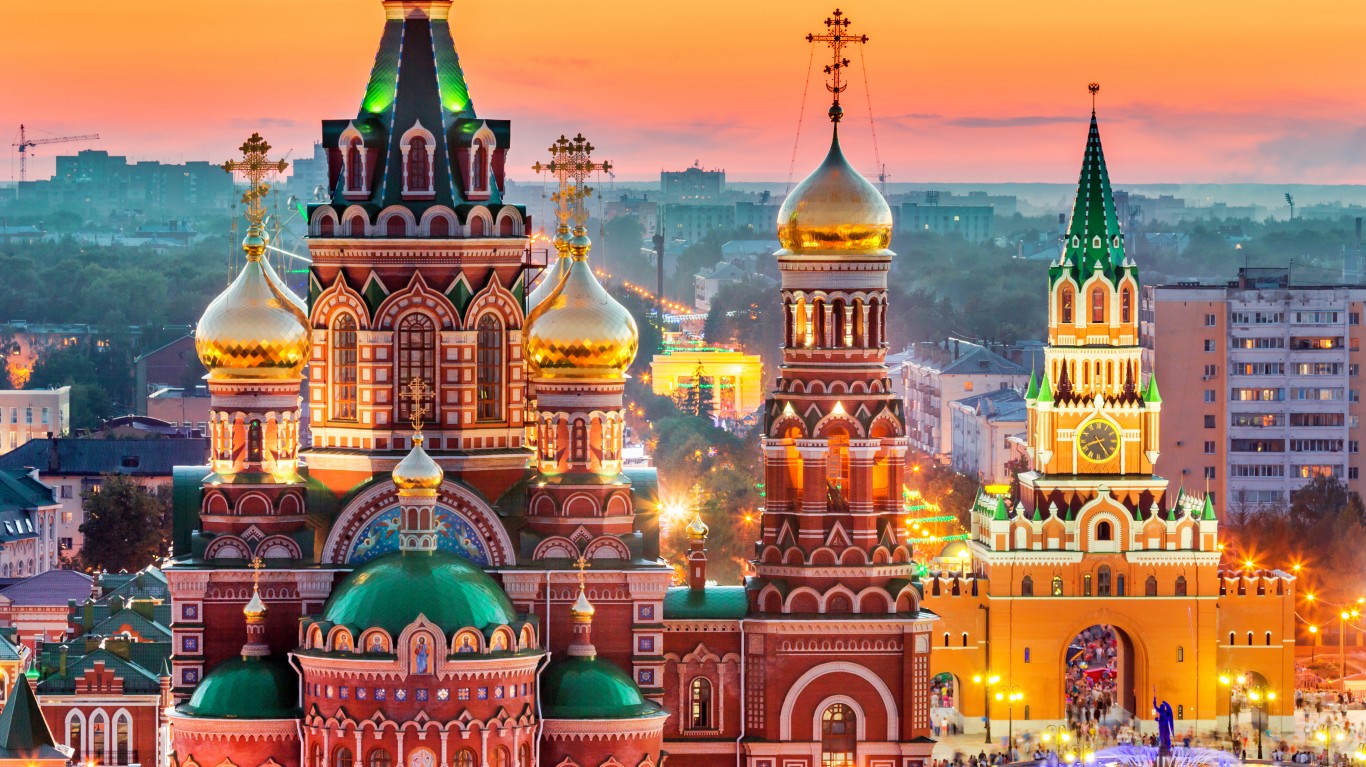
- Capital: Yoshkar-Ola
- Location: Volga region
- Land area: 9,000 square miles
- Population: 680,000
- Ethnicities: Mari, Russian
- Ethnic Russian Percentage: 47%
13. Sakha (Yakutia)
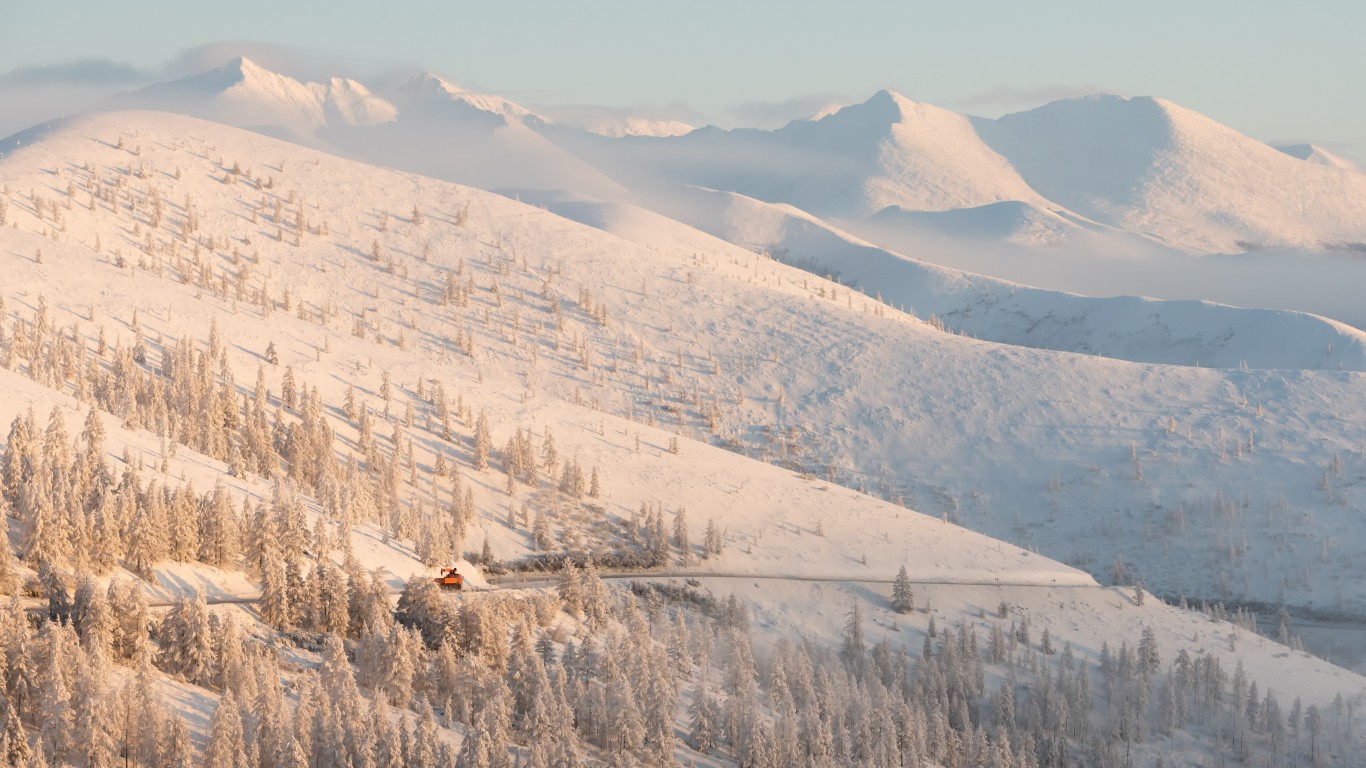
- Capital: Yakutsk
- Location: Siberia
- Land area: 1,198,500 square miles
- Population: 960,000
- Ethnicities: Yakut, Russian
- Ethnic Russian Percentage: 47%
14. Mordovia
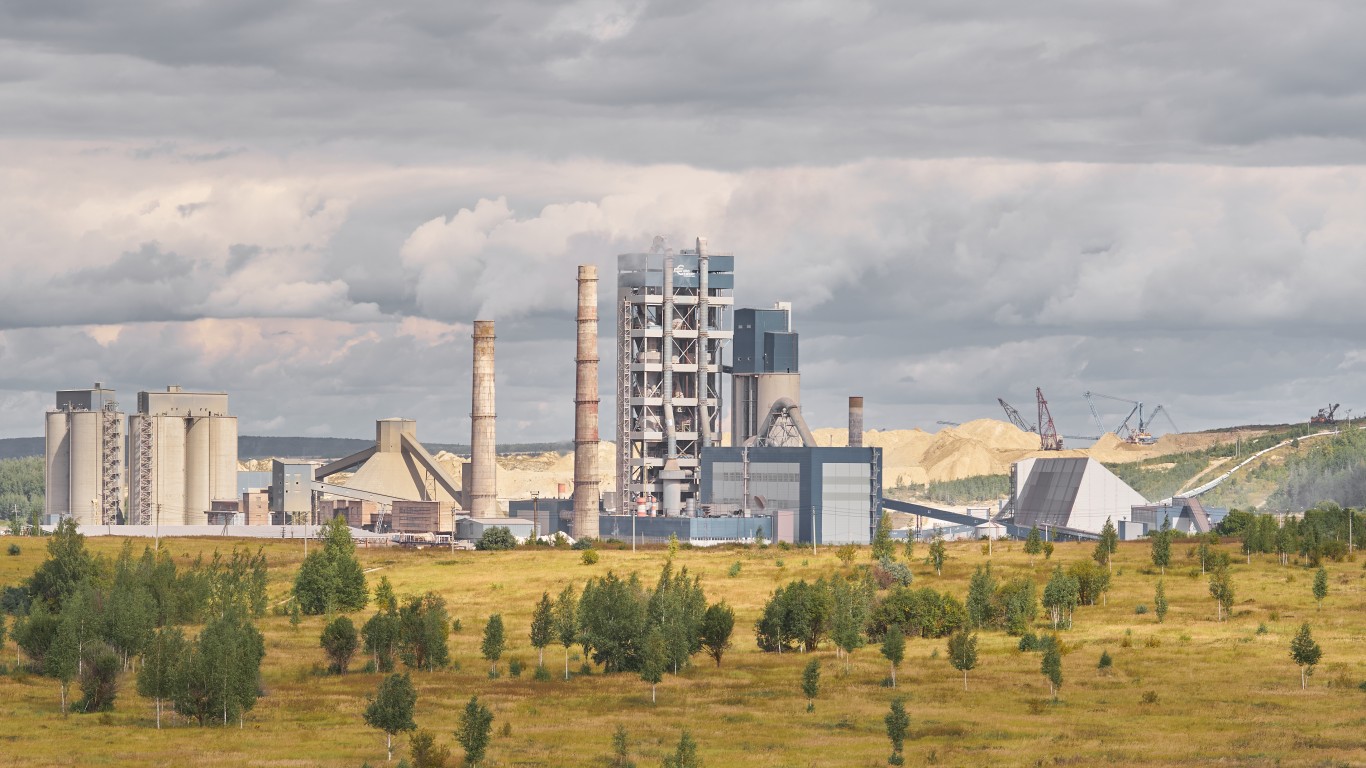
- Capital: Saransk
- Location: Volga region
- Land area: 10,100 square miles
- Population: 750,000
- Ethnicities: Mordvin, Russian
- Ethnic Russian Percentage: 54.1%
15. Altai
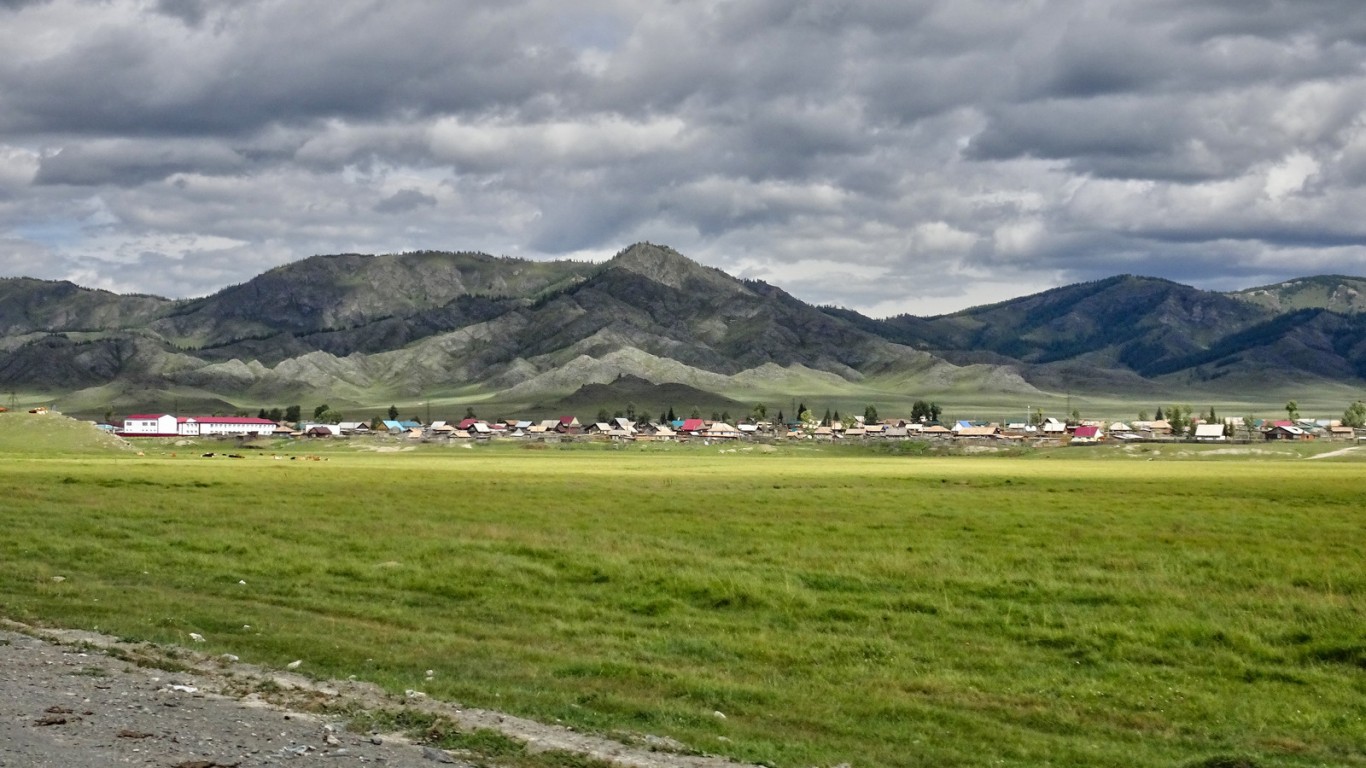
- Capital: Gorno-Altaysk
- Location: Siberia
- Land area: 35,800 square miles
- Population: 217,000
- Ethnicities: Altai, Russian
- Ethnic Russian Percentage: 57%
16. Udmurtia

- Capital: Izhevsk
- Location: Volga regi0n
- Land area: 16,300 square miles
- Population: 1,500,000
- Ethnicities: Udmurt, Russian
- Ethnic Russian Percentage: 61%
17. Adygea

- Capital: Maykop
- Location: North Caucasus
- Land area: 2.934 square miles
- Population: 450,000
- Ethnicities: Adyghe, Russian
- Ethnic Russian Percentage: 64%
18. Komi
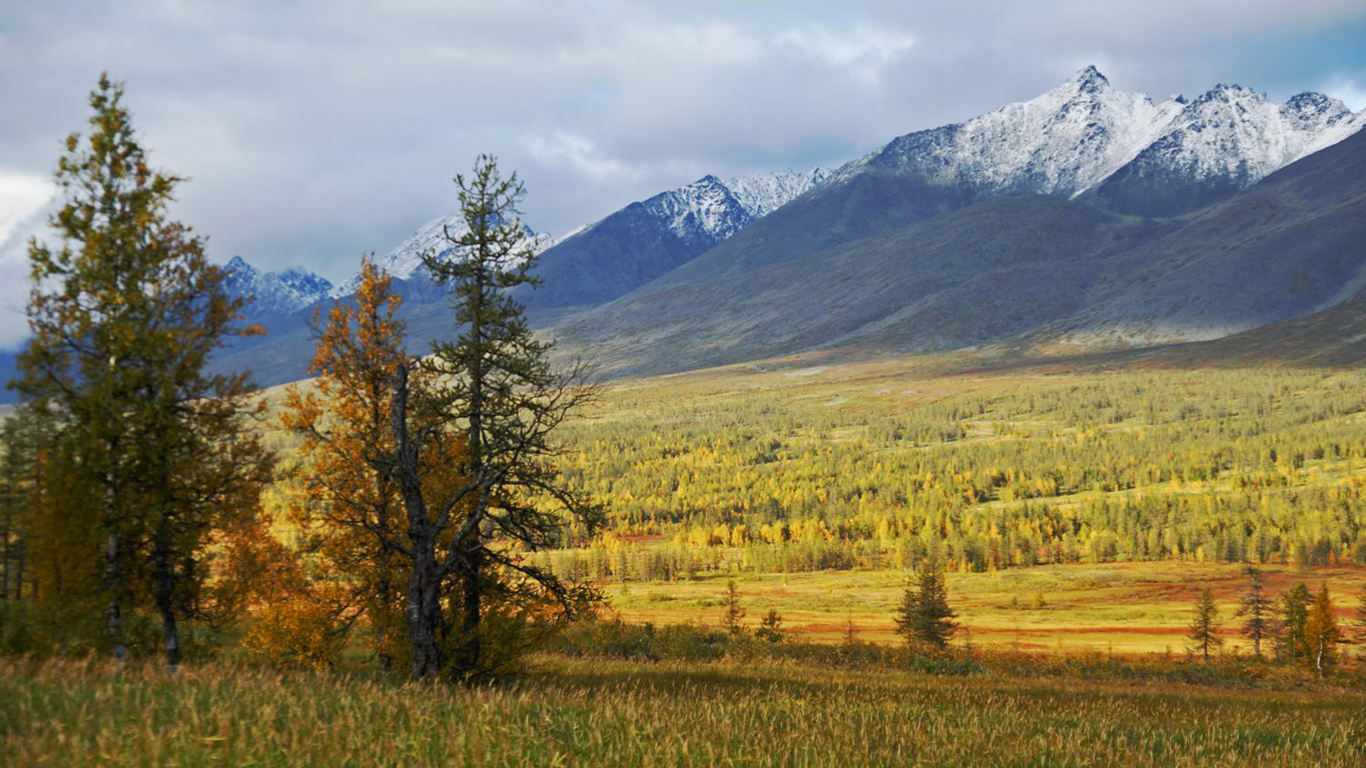
- Capital: Syktyvkar
- Location: European Russia
- Land area: 160,600 square miles
- Population: 850,000
- Ethnicities: Komi, Russian
- Ethnic Russian Percentage: 65%
19. Buryatia
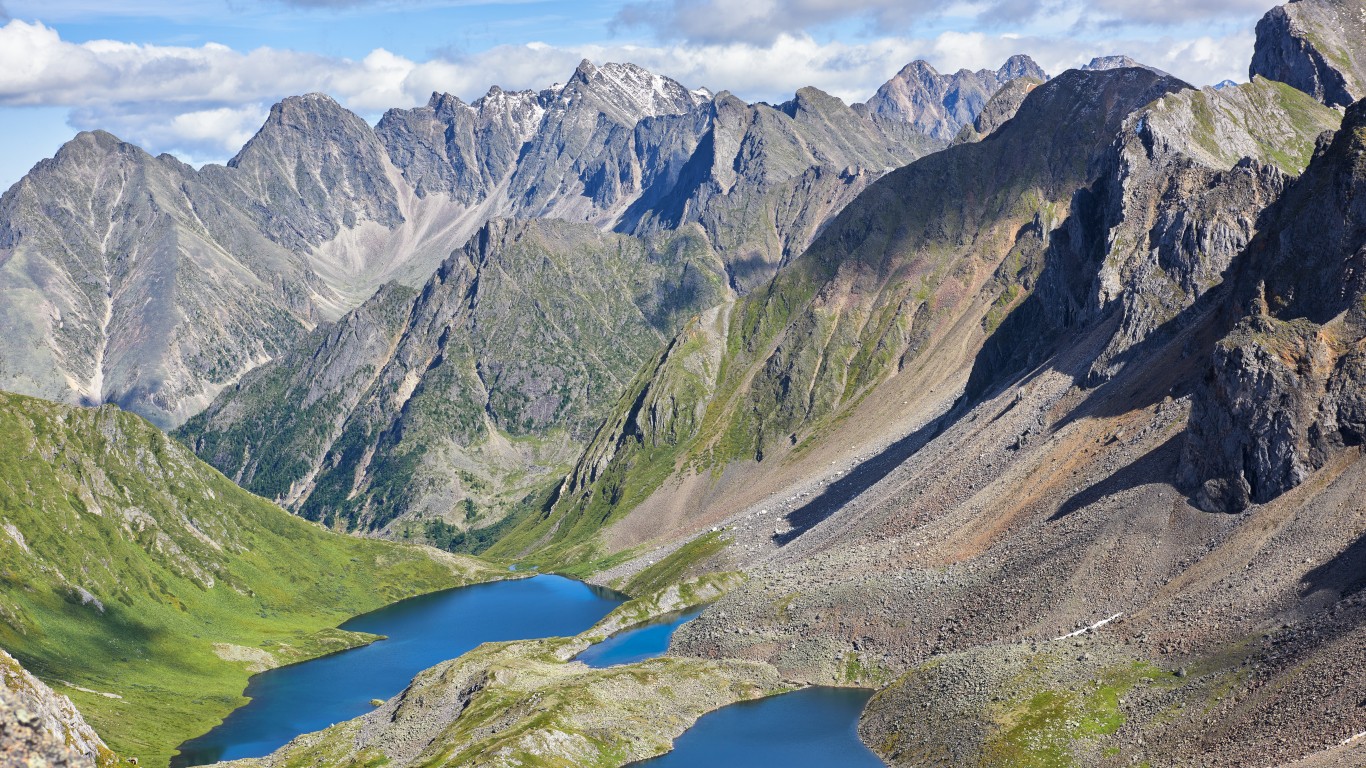
- Capital: Ulan-Ude
- Location: Siberia
- Land area: 135,638 square miles
- Population: 985,000
- Ethnicities: Buryat, Russian
- Ethnic Russian Percentage: 67%
20. Khakassia
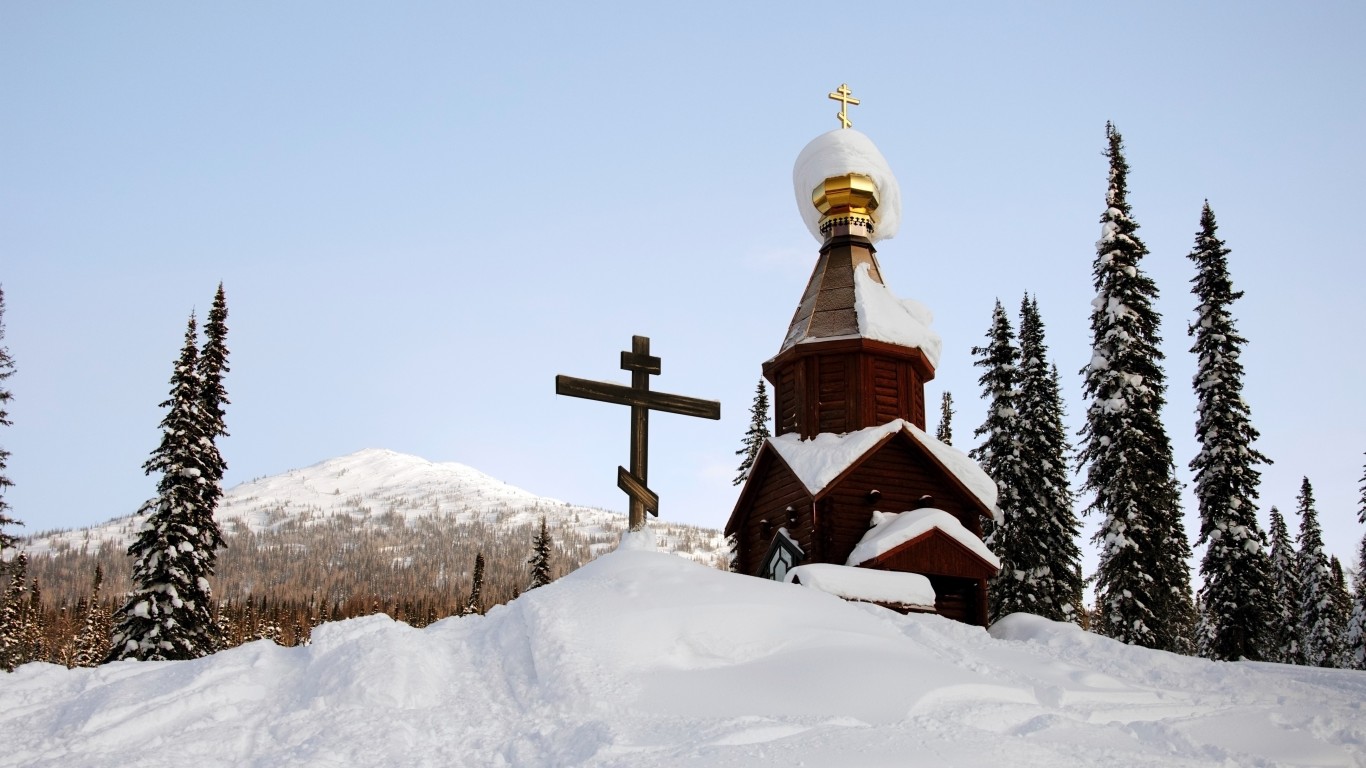
- Capital: Abakan
- Location: Siberia
- Land area: 23,900 square miles
- Population: 535,000
- Ethnicities: Khakas, Russian
- Ethnic Russian Percentage: 81%
21. Karelia
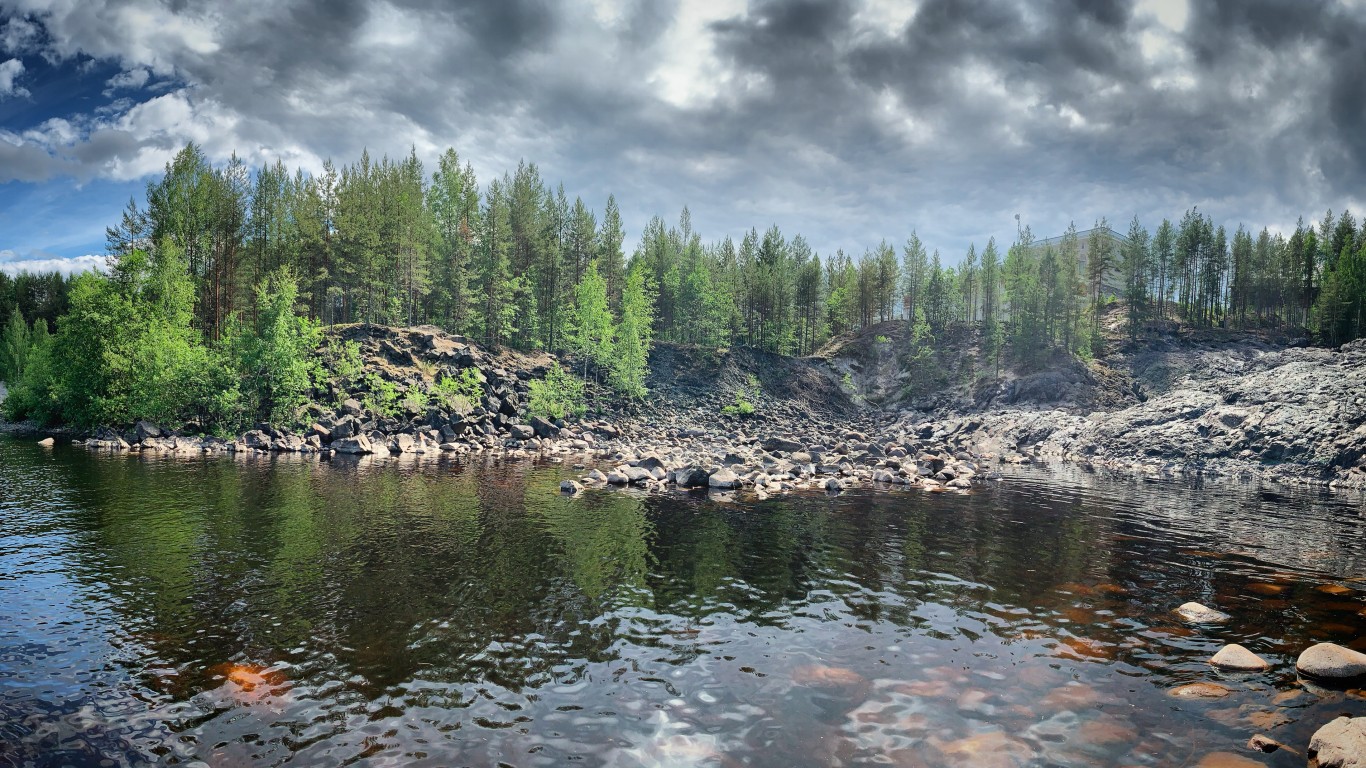
- Capital: Petrozavodsk
- Location: European Russia
- Land area: 66,600 square miles
- Population: 533,000
- Ethnicities: Karelian, Russian
- Ethnic Russian Percentage: 82%
It’s Your Money, Your Future—Own It (sponsor)
Retirement can be daunting, but it doesn’t need to be.
Imagine having an expert in your corner to help you with your financial goals. Someone to help you determine if you’re ahead, behind, or right on track. With SmartAsset, that’s not just a dream—it’s reality. This free tool connects you with pre-screened financial advisors who work in your best interests. It’s quick, it’s easy, so take the leap today and start planning smarter!
Don’t waste another minute; get started right here and help your retirement dreams become a retirement reality.
Thank you for reading! Have some feedback for us?
Contact the 24/7 Wall St. editorial team.
